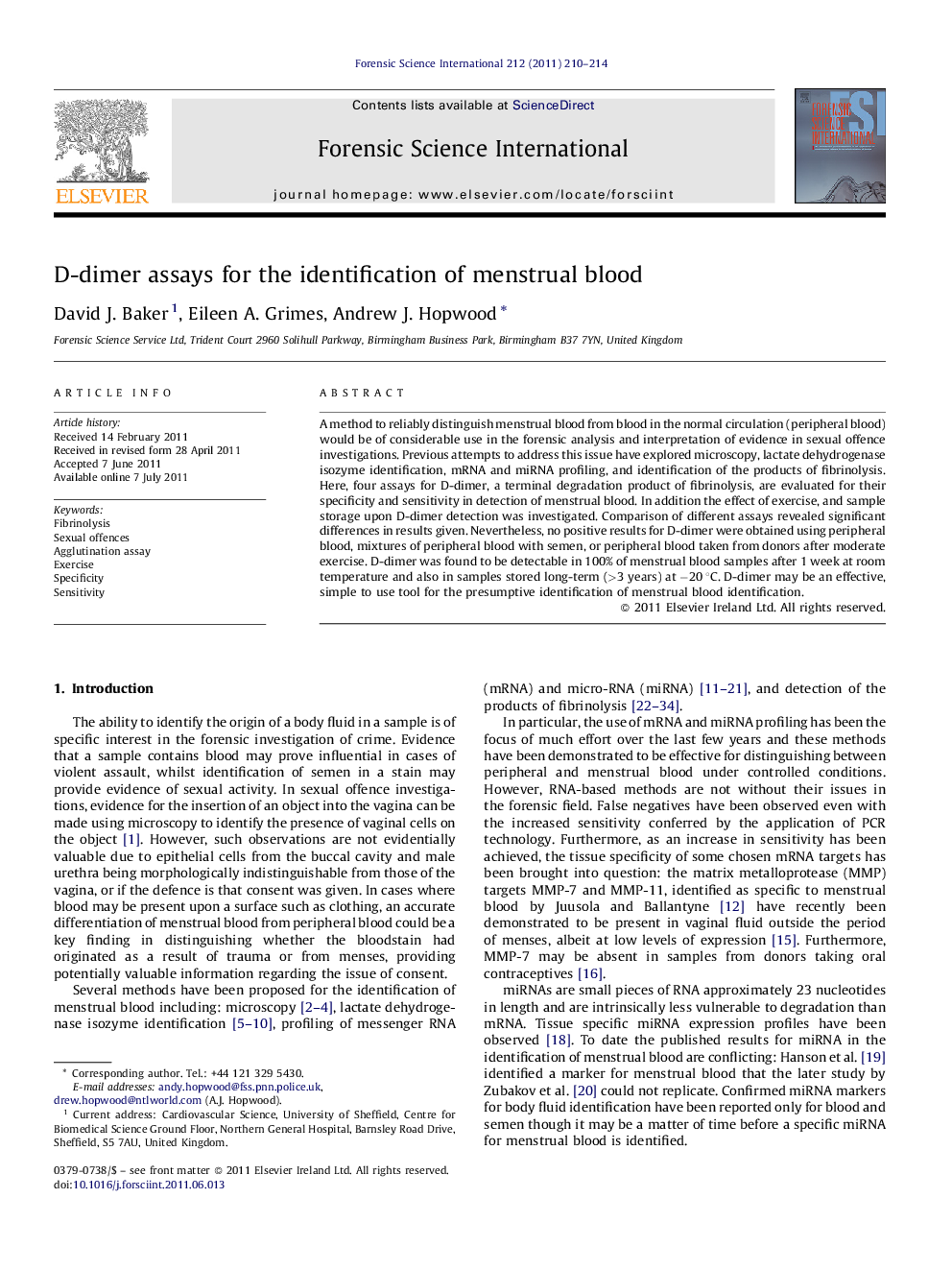| Article ID | Journal | Published Year | Pages | File Type |
|---|---|---|---|---|
| 96211 | Forensic Science International | 2011 | 5 Pages |
A method to reliably distinguish menstrual blood from blood in the normal circulation (peripheral blood) would be of considerable use in the forensic analysis and interpretation of evidence in sexual offence investigations. Previous attempts to address this issue have explored microscopy, lactate dehydrogenase isozyme identification, mRNA and miRNA profiling, and identification of the products of fibrinolysis. Here, four assays for D-dimer, a terminal degradation product of fibrinolysis, are evaluated for their specificity and sensitivity in detection of menstrual blood. In addition the effect of exercise, and sample storage upon D-dimer detection was investigated. Comparison of different assays revealed significant differences in results given. Nevertheless, no positive results for D-dimer were obtained using peripheral blood, mixtures of peripheral blood with semen, or peripheral blood taken from donors after moderate exercise. D-dimer was found to be detectable in 100% of menstrual blood samples after 1 week at room temperature and also in samples stored long-term (>3 years) at −20 °C. D-dimer may be an effective, simple to use tool for the presumptive identification of menstrual blood identification.
